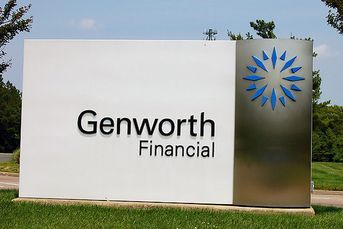Back to the future: Wirehouse firms resurrect training
After a decade of spending money to acquire successful representatives rather than develop their own, wirehouses are buffing…
After a decade of spending money to acquire successful representatives rather than develop their own, wirehouses are buffing up their training efforts.
“With the aging of the financial adviser industry, we need to continue to grow organically,” said Barry Krouk, head of talent management at Morgan Stanley Smith Barney LLC, which plans to hire and train thousands of younger advisers over the next few years to replace older hands at the nation’s largest retail firm.
Mr. Krouk has overseen the combined training programs of Morgan Stanley and Smith Barney since the firms merged two years ago. The Smith Barney national training program is the basis of the firm’s current program, with the Morgan Stanley side providing the coaching component.
“We assign every financial adviser trainee a coach at the local level,” Mr. Krouk said. “The coaches help them get their businesses off the ground.”
Merrill Lynch, whose famed Practice Development Program served as Wall Street’s de facto boot camp for decades, shut down its training program for six months during the worst of the financial crisis. It resumed the program in late 2009 and is now devoting more resources to it.
In fact, this year, Merrill hired managers in each of its 16 regions to focus solely on training young advisers on how to build their practices.
“We had a lot of training going on at the branches and at the regional level, so we wanted to have more consistency with our efforts,” said Tom Fickinger, Merrill’s head of financial adviser strategy.
GOING RETRO
Stewart Lee, who went through Merrill’s training program nearly 40 years ago, spent the first 20 years of his career there, working as an adviser and branch manager. He is now a training consultant to financial services companies and believes that Merrill will go back to its former emphasis on organic growth and adviser training. He also thinks the idea of using regional training managers will bring huge benefits to the firm in the long run.
“You can hire thousands of people and run them through a training program, and they go out to the branches and have no mentoring,” Mr. Lee said. “If they do this right, the regional managers will have more say on who goes on to do more-advanced training. This could be a big differentiator between Merrill and its competitors in the future.”
But the days when every Merrill trainee descended on the corporate campus in Princeton, N.J., for weeks of intense — and expensive — training before receiving their Series 7 license are unlikely to return.
“It probably wasn’t the best strategy,” Mr. Fickinger said. “We spent a lot of upfront money on people who might not make it.”
Merrill and other large firms are now more selective about who gets training and when.
UBS AG, for example, whose adviser force of 7,000 is the smallest among the wirehouses, isn’t opening its vaults to pay for new-adviser development. The Swiss banking giant inherited the Paine Webber & Co. training regime when it bought the firm in 2000, and reduced the term of the program from 22 weeks to 16 last year. It plans to put only 170 adviser candidates through the program this year, with the goal of keeping every one of the trainees, said UBS training director Ron Ransom.
“We recognize that training is very important to the future of a financial adviser, but we’re doing it in a focused way,” he said.
BASICS REMAIN THE SAME
The content of wirehouse programs has evolved over time, of course, but the basics of product knowledge, sales training, client acquisition and compliance remain the same. As the firms’ encouragement of fee-based business has grown — and as the possibility of a fiduciary standard looms — wirehouses also are increasing their emphasis on financial planning, tax planning and estate planning.
[Topic: Wirehouse firms]
They also are encouraging adviser teams as a way for newcomers to apprentice with veterans. Mr. Ransom said 90% of UBS trainees now are immediately paired with an experienced adviser. It’s about 50% at Merrill Lynch, according to Mr. Fickinger.
Michael Zuccarello, managing director of training and development at Wells Fargo & Co., oversees the training of between 700 and 800 advisers a year, and he too is embracing the teaming concept.
“It’s important that we develop the next generation of financial advisers,” Mr. Zuccarello said. “It’s a huge advantage to have young people come on board and partner with older advisers who may be looking to hand off their practices.”
And with the average age of financial advisers somewhere just north of 55, there probably will be a lot of handoffs over the next decade.
E-mail Andrew Osterland at [email protected].
Learn more about reprints and licensing for this article.




